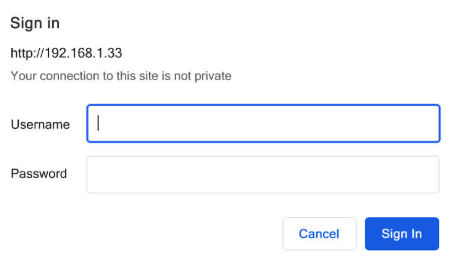So here’s the deal: 192.168.1.33 is a private IP address. It’s not something you type into your browser by accident—it’s used to access your router’s configuration dashboard. That’s where you control all the behind-the-scenes network stuff.
Let’s Get You Logged In
Here’s how to make it happen in under 2 minutes:
1. Connect to Your Network
Make sure your device is connected to the router—WiFi or with an Ethernet cable.
2. Open Your Browser
Any browser works—Chrome, Firefox, Safari, Edge… just go with what you’ve got.
3. Enter This Into the Address Bar
http://192.168.1.33Press Enter, and if this is your router’s gateway IP, you’ll land on the login screen.
4. Use Default Login Credentials
Try the usual suspects:
- Username: admin
- Password: admin
Or…
- Username: admin
- Password: password
If someone changed them and you don’t remember, no worries—we’ll get to that too.

Default Credentials for 192.168.1.33
| Username | Password |
|---|---|
| admin | admin |
| admin | password |
| user | user |
Still locked out? Check the back of your router for a sticker with the exact login info. Manufacturers like to hide it there.
Can’t Access 192.168.1.33? Here’s the Fix
Before you lose your mind, try these:
- Make sure you typed the IP right. One wrong digit? No entry.
- Use another browser or device—it could just be a weird browser cache thing.
- Reboot your router.
- Still nothing? It might not be your router’s IP. Let’s find the real one.
Find Your Router’s Actual IP (Just in Case)
On Windows:
- Open Command Prompt (
Win + R> typecmd) - Type
ipconfigand hit Enter - Look for Default Gateway—that’s your router IP
On Mac:
- Go to System Preferences > Network > Advanced > TCP/IP
- Look at the Router section—that’s the one
Forgot Your Router Password?
Time to reset, my friend:
- Find the reset pinhole on the back of the router.
- Use a paperclip to press and hold it for 10-15 seconds.
- It’ll restart and go back to factory settings.
Now, try logging in again with the default credentials above.
What Can You Change After Logging In?
Oh, there’s a bunch:
- Update your WiFi name (SSID)
- Change your WiFi password
- Check who’s connected to your network
- Set up guest WiFi
- Block unwanted users
- Adjust parental controls
- Update router firmware for better performance
This is where your internet life gets upgraded.
Wrapping It Up
Accessing your router via 192.168.1.33 isn’t rocket science. Once you’re in, you’re the boss of your home network. Whether you’re boosting security, kicking out freeloaders, or just flexing your tech muscles, now you know exactly what to do.